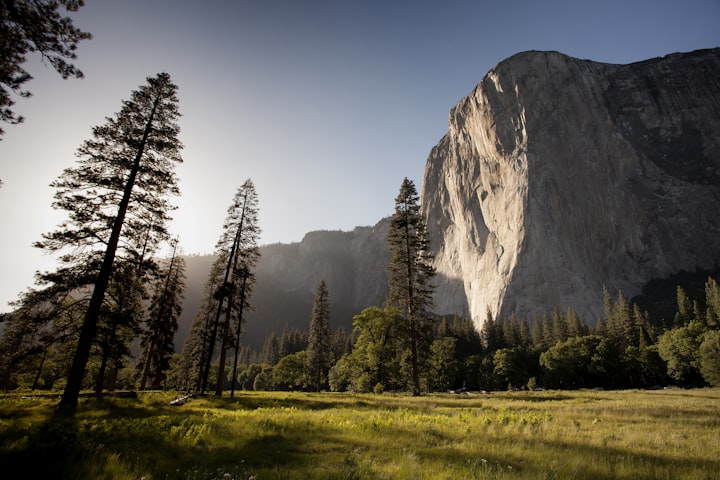Melting glaciers will reveal vast new ecosystems in need of protection.
The emerging habitats represent huge ecological shifts and present new challenges for conservation.
Melting glaciers will reveal vast new ecosystems in need of protection.
The emerging habitats represent huge ecological shifts and present new challenges for conservation.
Rising temperatures could reduce the area covered by alpine glaciers around the world by more than one-fifth this century, exposing vast areas of land to the atmosphere for the first time in thousands of years. The emerging habitats that will form as the ice retreats present challenges — as well as opportunities for conservation efforts, new research shows1.
Alpine glaciers outside of Antarctica and Greenland currently cover some 650,000 square kilometres. They supply summer water to nearly 2 billion people as well as to ecosystems across the globe, and their retreat has provided striking evidence of the perils of global warming.
Researchers modelled the future of those glaciers, as well as the terrain that they would leave behind, under both low and high greenhouse-gas emissions scenarios. The results, published today in Nature, suggest that even in the most optimistic scenario an area twice the size of Ireland could be exposed by the end of the century. That exposure more than doubles in a scenario with high emissions, with the greatest area impacts seen in Alaska and the high mountains of Asia.
“This could be one of the largest ecosystem changes on our planet,” says lead author Jean-Baptiste Bosson, a glaciologist with the Conservatory of Natural Areas of Haute-Savoie (ASTERS), a conservation group based in Annecy, France.
Birth of habitats
Bosson and his colleagues project that around 78% of newly exposed terrain would be on land, whereas 14% and 8% percent of the ice-free areas would occur in marine and freshwater regions, respectively. In a curious twist, Bosson says, many of these areas could provide crucial new habitat that must be protected: colonization by plants could lead to increased carbon storage at a time when forests elsewhere are being destroyed, while also providing fresh habitats for animals threatened by climate change at lower elevations.
The study provides useful guidance for scientists who are working to understand how microorganisms, plants and animals move into pristine spaces, says Francesco Ficetola, a zoologist at the University of Milan in Italy who studies glacial ecosystems. It could also help governments to prepare for inevitable questions about land management: less than half of the glacial areas analysed in the study are currently located in parks and other protected areas.
What’s needed going forward is an integration of such global analyses with detailed ecological studies that create a baseline for tracking the evolution of these new habitats, Ficetola says. “This will allow us to develop a more accurate prediction of what happens in each deglaciated area of the planet.”
As glaciers melt, they will uncover new ecosystems that need conservation.
The new habitats will have huge ecological impacts and pose new challenges for protecting them.
By the end of this century, global warming could shrink the area of alpine glaciers around the world by more than 20%, revealing vast lands that have been hidden under ice for millennia. The new habitats that will emerge as the glaciers recede will face challenges — but also offer opportunities for conservation efforts, according to a new study1.
Alpine glaciers outside of Antarctica and Greenland now cover about 650,000 square kilometres. They provide water in summer to nearly 2 billion people and many ecosystems worldwide, and their melting shows the dangers of climate change.
Scientists simulated the future of these glaciers and the lands they will leave behind under different scenarios of greenhouse-gas emissions. The results, published today in Nature, show that even in the best-case scenario, an area as big as two Irelands could be exposed by 2100. That area more than doubles in the worst-case scenario, with Alaska and the high mountains of Asia losing the most land.
“This could be one of the biggest ecosystem transformations on our planet,” says Jean-Baptiste Bosson, a glaciologist with the Conservatory of Natural Areas of Haute-Savoie (ASTERS), a conservation group in Annecy, France.
New habitats Bosson and his team estimate that about 78% of the newly exposed lands would be terrestrial, while 14% and 8% would be marine and freshwater, respectively. Interestingly, Bosson says, many of these lands could become important new habitats that need protection: plants could colonize them and store more carbon when forests elsewhere are being cut down, while also providing fresh
For Bosson, the study is yet another reminder of what is at stake as the world works to reduce greenhouse emissions. “We are at a turning point for glaciers,” he says. “We can save something like 75% of the current ice up to the end of this century, but we have to act.”






Comments
There are no comments for this story
Be the first to respond and start the conversation.